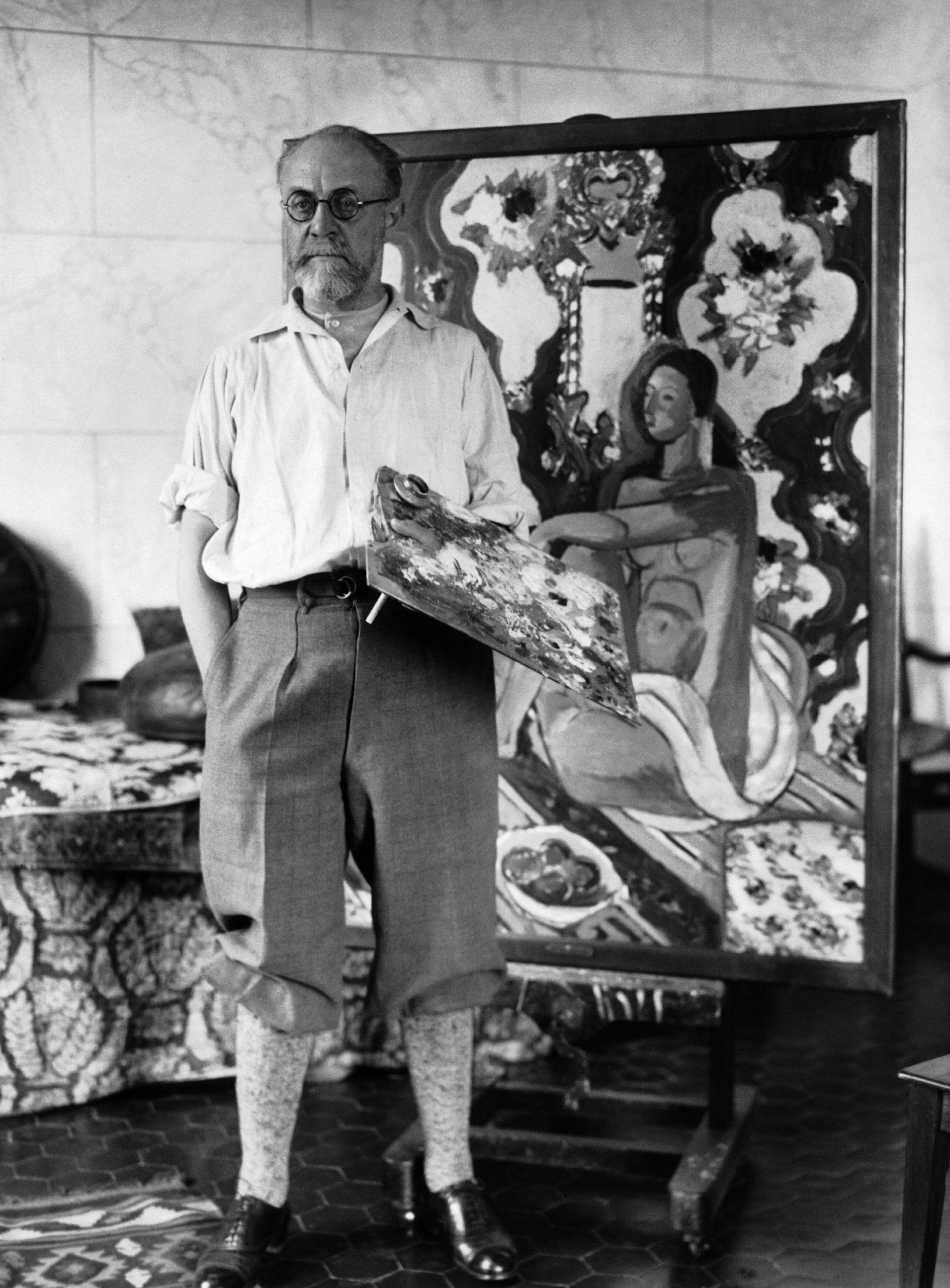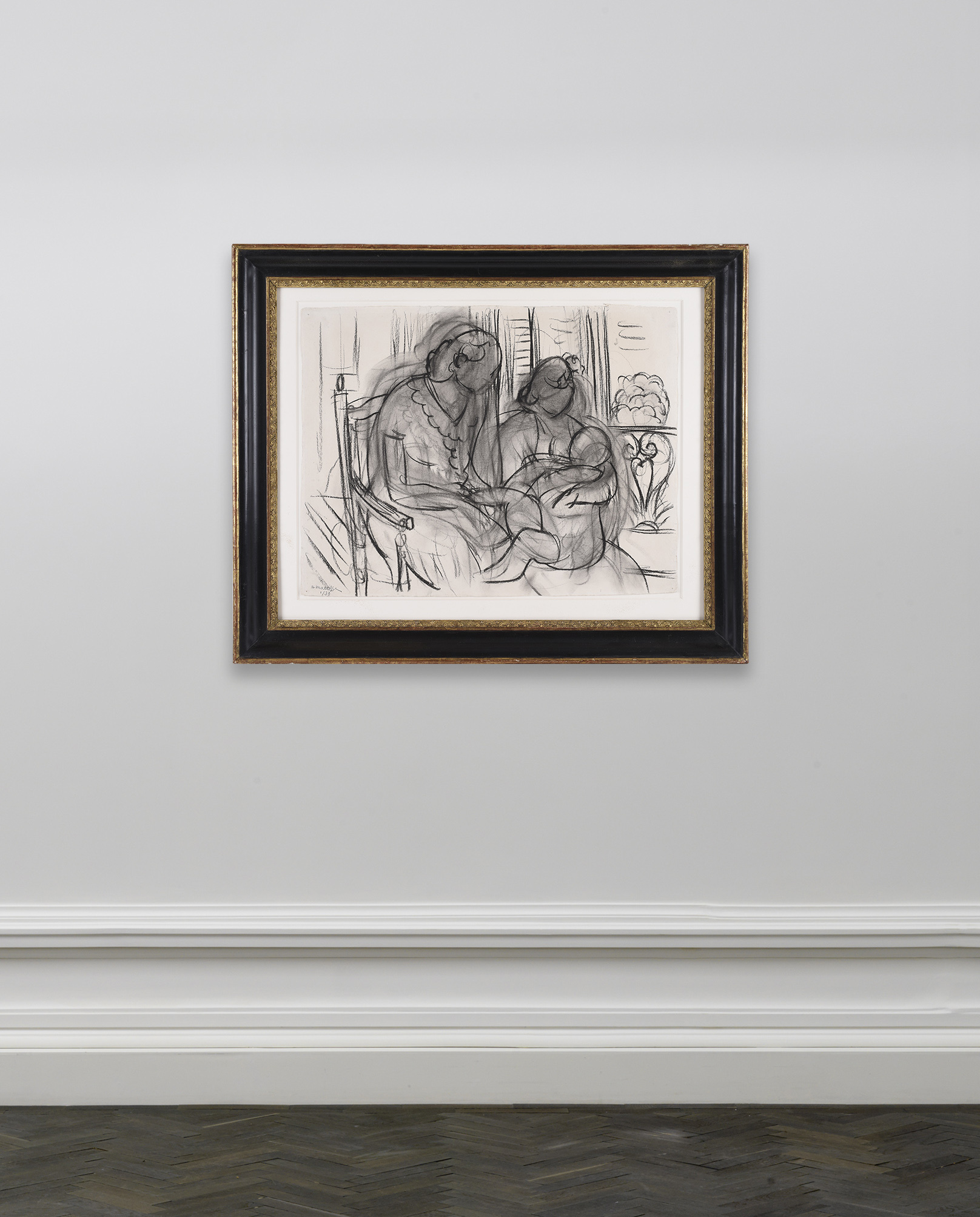Maternité, 1939
Henri Matisse
Henri Matisse’s Maternité from 1939 is an exquisite example of the artist’s works in charcoal, enhanced with the technique of shading also known as ‘estompe’. Amongst the artist’s most expressive media, in his own words, ‘…charcoal or stump drawing … allows me to consider simultaneously the character of the model, her human expression, the quality of surrounding light, the atmosphere and all that can only be expressed by drawing’ (Notes of a Painter, 1939). The series


